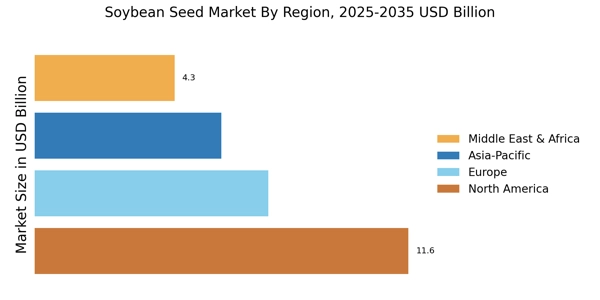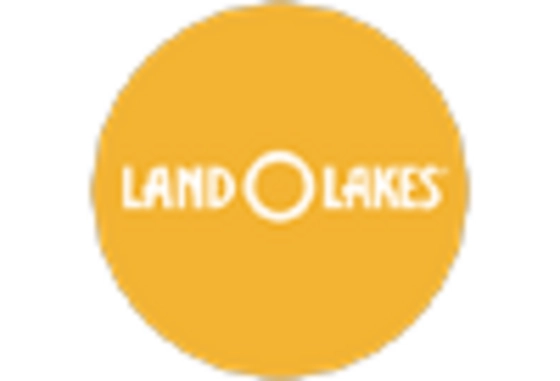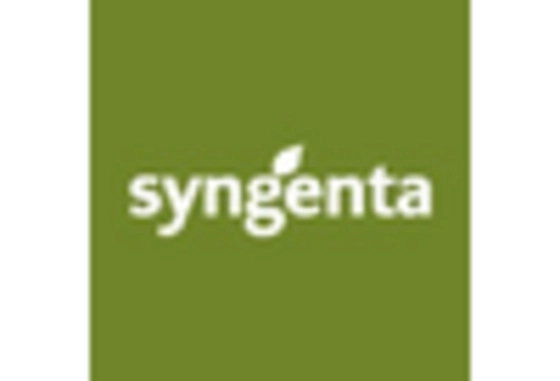Government Policies and Support
Government policies and support mechanisms are pivotal in shaping the Soybean Seed Market. Many countries are implementing favorable agricultural policies, including subsidies for soybean farmers and investments in research and development. For example, in 2025, several nations are expected to allocate significant funding towards agricultural innovation, which includes the development of high-yield soybean varieties. Such initiatives not only encourage farmers to adopt modern farming practices but also enhance the overall productivity of the soybean sector. This supportive regulatory environment is likely to foster growth in the Soybean Seed Market, as it provides farmers with the necessary resources to thrive.
Increasing Demand for Plant-Based Proteins
The rising consumer preference for plant-based diets is driving the Soybean Seed Market. As more individuals adopt vegetarian and vegan lifestyles, the demand for soybeans, a key source of plant-based protein, is expected to surge. In 2025, the global consumption of soy protein is projected to reach approximately 20 million metric tons, indicating a robust growth trajectory. This trend is further supported by the health benefits associated with soy consumption, including its role in reducing cholesterol levels and promoting heart health. Consequently, soybean seed producers are likely to focus on enhancing yield and quality to meet this burgeoning demand, thereby influencing the overall dynamics of the Soybean Seed Market.
Technological Innovations in Seed Development
Technological advancements in seed development are significantly impacting the Soybean Seed Market. Innovations such as genetic modification and hybridization techniques are enabling the production of soybean seeds that are more resilient to pests, diseases, and environmental stresses. For instance, the introduction of genetically modified soybean varieties has led to increased yields, with some varieties showing up to a 30% improvement in productivity. These advancements not only enhance the profitability for farmers but also contribute to food security by ensuring a stable supply of soybeans. As these technologies continue to evolve, they are likely to play a crucial role in shaping the future of the Soybean Seed Market.
Sustainability and Environmental Considerations
Sustainability concerns are increasingly influencing the Soybean Seed Market. As consumers and producers alike become more aware of environmental issues, there is a growing emphasis on sustainable farming practices. This includes the adoption of soybean varieties that require fewer inputs, such as water and fertilizers, thereby reducing the environmental footprint of soybean cultivation. In 2025, it is projected that sustainable soybean farming practices will account for a substantial portion of the market, as farmers seek to align with consumer preferences for environmentally friendly products. This shift towards sustainability is likely to drive innovation within the Soybean Seed Market, as stakeholders strive to develop eco-friendly seed options.
Rising Global Population and Food Security Concerns
The increasing global population is exerting pressure on food production systems, thereby influencing the Soybean Seed Market. With the world population projected to exceed 9 billion by 2050, the demand for food, particularly protein sources, is expected to escalate. Soybeans, being a highly efficient source of protein, are likely to play a crucial role in addressing food security challenges. In 2025, it is anticipated that soybean production will need to increase by approximately 50% to meet the growing demand. This scenario presents a significant opportunity for the Soybean Seed Market to innovate and expand, ensuring that adequate supplies are available to meet future needs.


















Leave a Comment